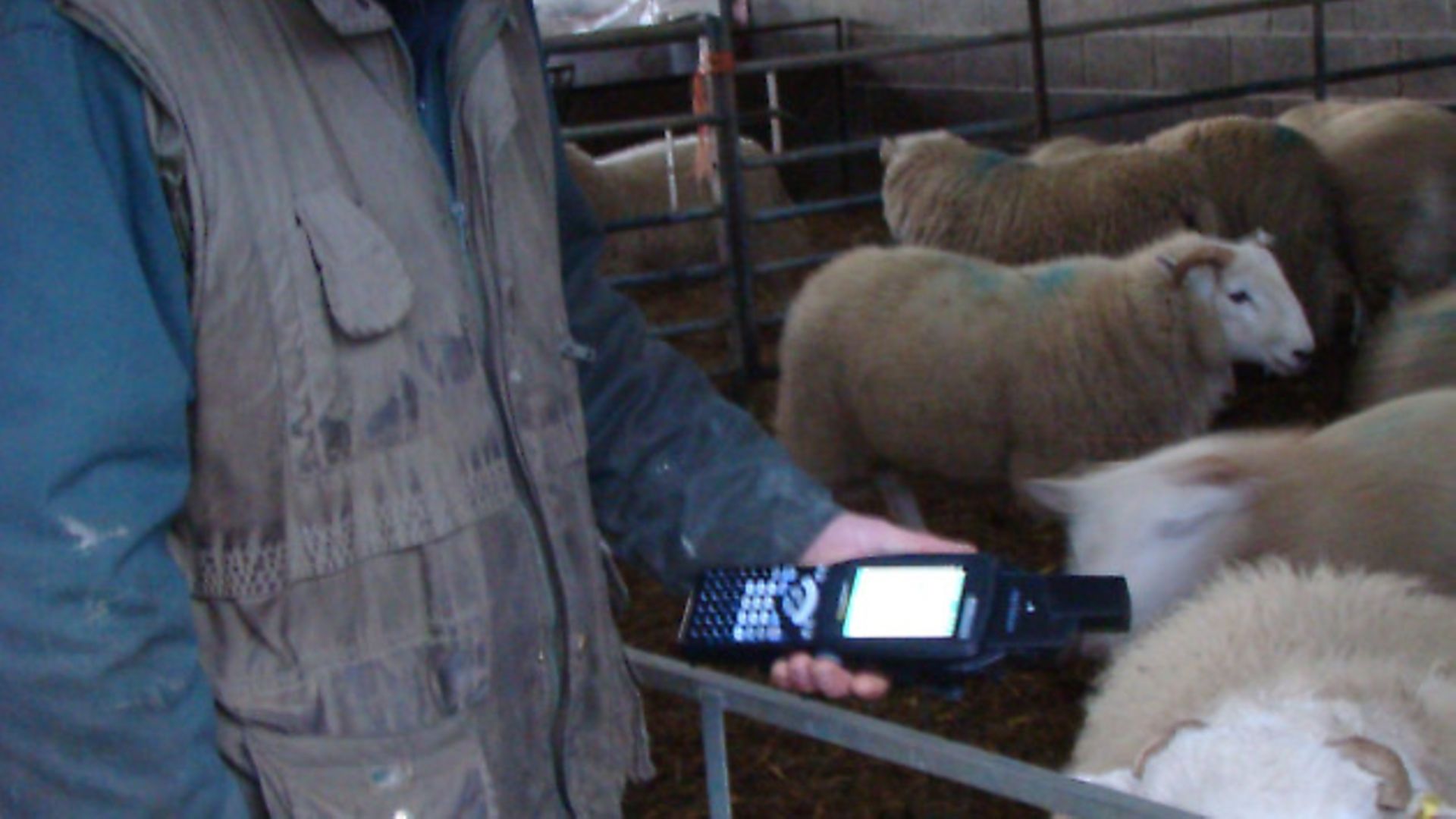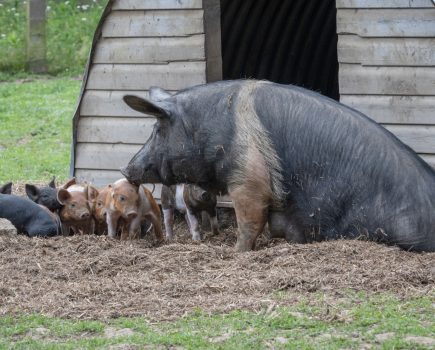Why using electronic identification of sheep is now worth considering – plus more small holding tips

Getting serious about EID
Compulsory electronic identification (EID) of sheep was introduced in 2010, and, although none of us wanted it, it’s clearly here to stay. There was no requirement to retrospectively identify older animals with the new electronic tags so, initially, only the very largest farms could justify the purchase of tag reading equipment. However, several years down the line, most of those older sheep will by now have been replaced with younger animals, so the majority (if not all) of the sheep in everyone’s flocks will be electronically identified. Therefore it makes sense at this stage to be considering investing in a tag reader, even for relatively small flocks. The simplest (and therefore the cheapest) readers merely produce lists of animals, so are most suited to situations where large numbers of sheep are handled and only minimal data is required – e.g., where sheep pass through a market or collecting centre. However, on farms and smallholdings there’s considerable benefit to be gained from investing in superior equipment – what are, in effect, hand held computers with tag reading capability. You can keep all your flock records in this way, including breeding information, pedigree details, veterinary treatments and so on, and update everything on the spot. It also makes it much easier to capture and analyse data on a regular basis, and improve your flock management (and therefore health and welfare) accordingly. An example of this would be regular weighing of your sheep: A weigh crate can equally well be used to restrain animals for dosing, marking, etc, each time the flock is handled, and if you’ve got the technology on hand to not only record the weight, but to analyse it too, you would be well advised to use it, even if you wouldn’t normally be making a note of the weights at that time. The types of software included with the better EID reader packages are quite capable of producing graphs illustrating bodyweight changes over time, enabling you to identify key times of year that your sheep are losing weight when perhaps they shouldn’t. This information gives you a sound basis on which to plan grazing management, supplementary feeding and parasite control strategies to the overall benefit of your flock.
Unfortunately the type of equipment that has this kind of capability doesn’t come cheap (expect to pay anything from £500 – £1,200 for a hand-held reader) but for pedigree breeders and anyone who is serious about good flock management it should be justifiable. There are lots of companies supplying EID equipment nowadays, but we chose to purchase our tag reader from Border Software (www.bordersoftware.com) because the chap who runs the company is a smallholder himself, so has a genuine understanding of our requirements.
Feed prices: are they fair?
Livestock feed prices have come down a bit this winter, but is your merchant passing this saving on to you? I suggest you dig out last year’s invoices, and compare what you were paying then to what you’re paying now. If it’s stayed the same (or gone up) then you need to have a word with your supplier!
Weigh crates: choose carefully
In my opinion, a good weigh crate is an absolutely essential piece of kit for any sheep keeper. However, many designs have mesh sides, which are a nightmare if your lambs have horns, as many of the rare, primitive and hill breeds have – all of which are popular choices with smallholders. It doesn’t take much for a lamb to rip a horn off, and, although they seem to get over it pretty quickly, the resulting bloody mess is distressing for everyone involved. (And it really does make a mess!). Likewise, eartags are easily ripped out if they catch in the mesh. Therefore, when choosing a weigh crate, shop around for one that has solid panels in the sides, and vertical bars on the entry / exit doors.
TOP TIPS
Consider a scan
Pregnancy scanning is one of the most useful aids to winter sheep flock management. Contractors’ charges are very reasonable (less than 50p / ewe around here, although a minimum callout fee may apply to small flocks), and the saving you’ll make by more accurate feeding will more than cover the cost. Also, knowing how many offspring each ewe is expecting will help avoid many common health and welfare pitfalls at lambing time.
Pallet preservation
Old pallets have long been a source of free timber for enterprising smallholders, and are particularly widely used in the construction of poultry houses and sheep pens. However, breaking them down into their component parts without smashing too many useful planks has always proved tricky. The type of nail used resists all removal efforts, and trying to lever the boards off causes them to split. Now I think I’ve found the perfect solution: Leave the pallets out in the rain for a while to soften the wood, then, using a flat-headed punch against the head of each nail, simply drive them through into the thicker battens. The planks can then be lifted off with no damage other than a small round hole where the punch passed through. Once you get into the swing of it a pallet can be broken down surprisingly quickly, with very little wastage.
Valuing your stock
Do you know what your animals are worth? Many smallholders don’t, with the result that transactions are often based on wild guesses. On the one hand, there’s the inclination to over-value, and hence charge far too much. The losers here are usually newcomers to smallholding, who, knowing even less about market trends than the vendor does, pay the asking price and are subsequently disappointed. On the other hand, not knowing the true value of what you’re trying to sell may leave you open to exploitation by unscrupulous dealers. (Although to be honest, all the livestock dealers I’ve ever dealt with have been very fair). I suggest it’s worth the while of any livestock keeper to make a point of visiting the local auction market from time to time, even if that’s not the way you want to sell your own beasts. The bottom line price for any animal is what it’s worth for slaughter, and you can work upwards from there, adding value on the basis of pedigree information, breeding potential, etc.
Get decent wellies!
Buy good wellies – you’ll be spending most of your life in them, so it’s well worth it. Cheap and nasty boots can leave your feet in a right mess, particularly during periods of peak workload. Even the old tips such as wearing thin socks under thick socks, or putting talcum powder in them, won’t be sufficient to guard against bleeding fissures in the soles of your feet if you’re walking umpteen miles a day during lambing time in unsuitable footwear. My own favoured rubber boots are Dunlop Purofort Thermo, which are akin to giving yourself 4-wheel-drive in warmth and comfort!
Lambing course
Once again we’ll be holding our popular residential lambing week, March 15-19.
Now firmly established as the ‘Rolls Royce’ of lambing courses, we cover all aspects of sheep husbandry during this critical time in a truly ‘hands-on’ fashion. Participants gain all the experience required to manage their own flocks through the busy lambing period.
Bookings are now being taken, so email info@viableselfsufficiency.co.uk for further information.
Image(s) provided by:
Archant







